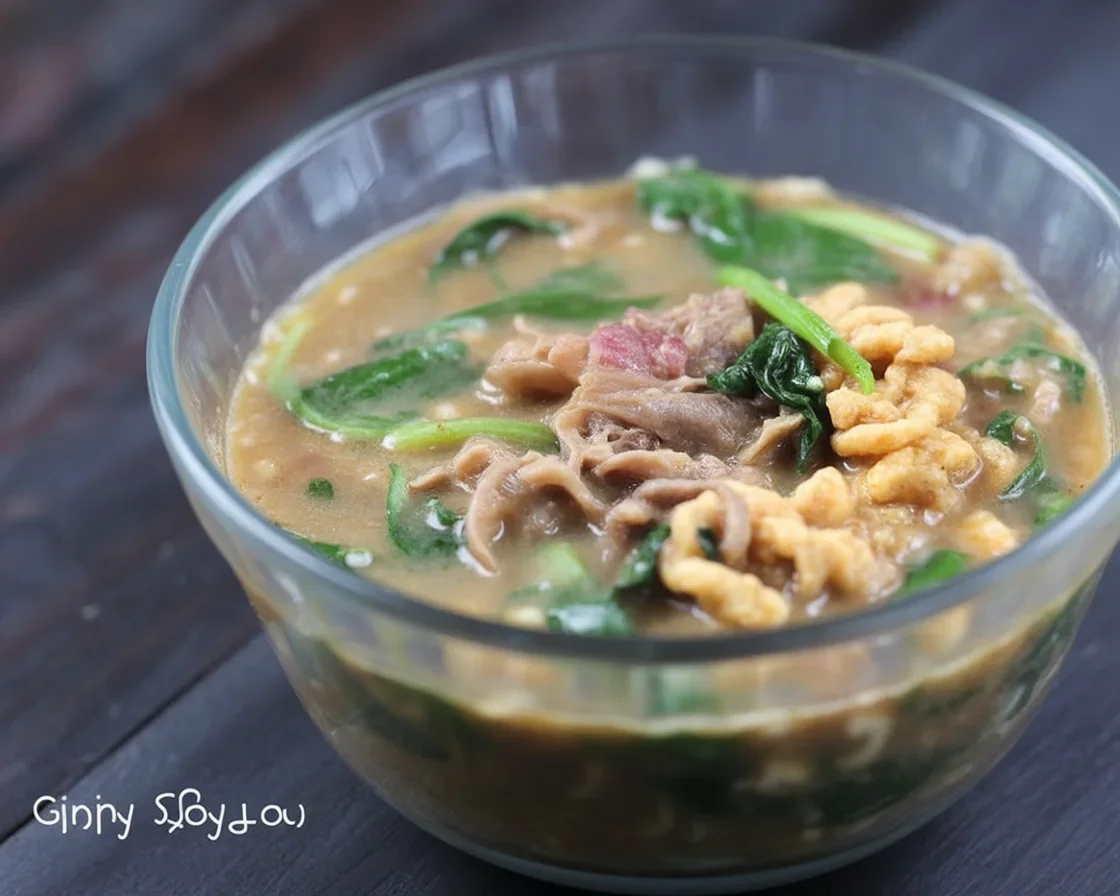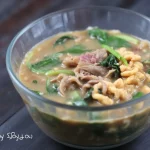- Introduction to ginisang monggo
- Preparing mung beans
- Sautéing aromatics
- Cooking beans with vegetables
- Seasoning
- Serving with rice
- Nutrition notes
- Common Questions
- Ready to Ladle Up Some Comfort?
Filipino ginisang monggo was always my family’s “is it Friday already?” meal. You ever crave something simple, healthy, but extra comforting—like rain’s tapping at the window and your wallet’s got moths? That’s what this dish is for. It’s budget-friendly, earthy, surprisingly filling, and you’ll find it on just about every Filipino table, from busy parents to hungry college students. Oh, and if you love experimenting with classic Pinoy favorites, do check out these adobo variations or get the kids involved with smackin’ good Filipino recipes for kids too.
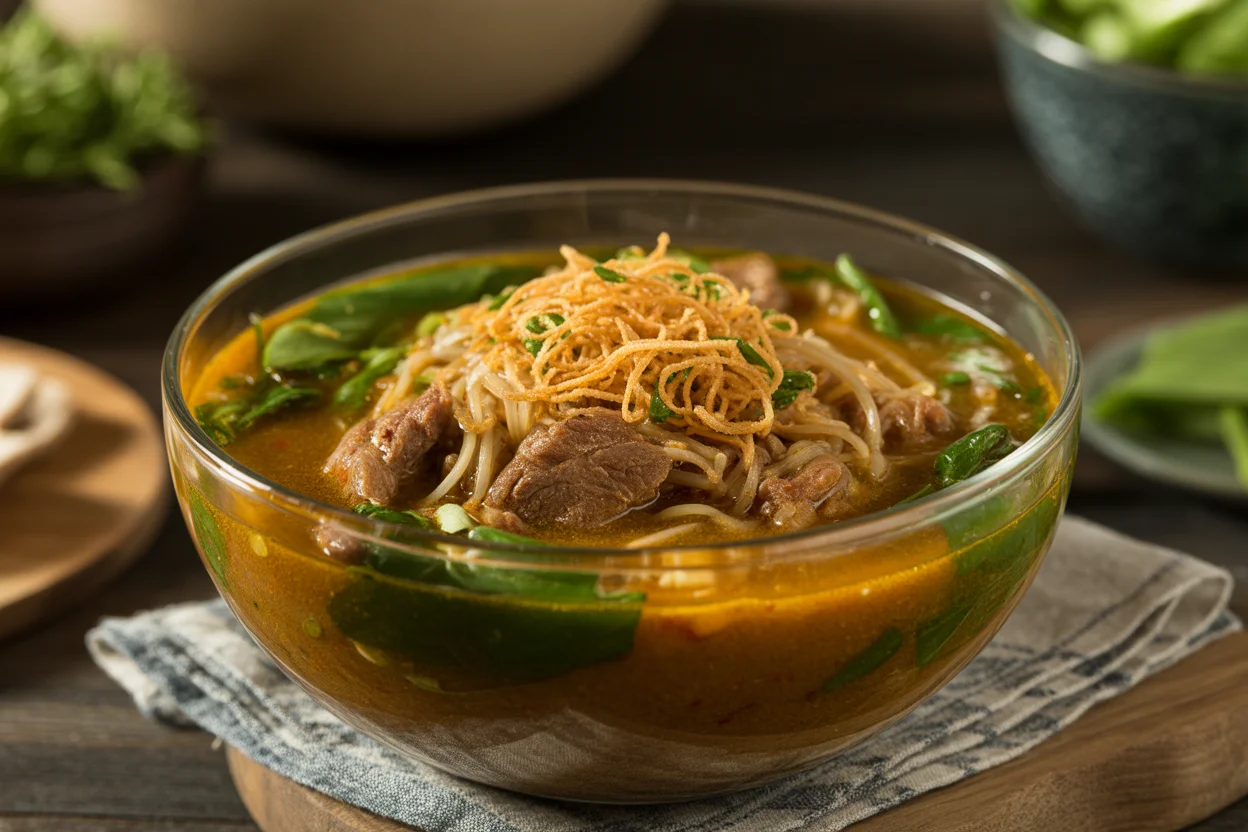
Introduction to ginisang monggo
Ginisang monggo is basically a mung bean stew with vegetables. Don’t let “stew” scare you off. This is super casual, throw-in-the-pot cooking. No pressure here. You start with humble green mung beans. These are small, oval, and cook way faster than kidney beans (thank. goodness.). What I love is how flexible ginisang monggo is. There’s hardly a “wrong” way to do it—everyone tosses in what they have in the fridge. Sometimes it’s pork, sometimes fish, tofu, spinach, or ampalaya (bitter gourd, if you wanna get wild).
Usually, ginisang monggo pops up mid-week. You want a meal that stretches far, so everyone leaves the table full. Something about the way the beans get creamy—almost mushy if you’re like me and leave it bubbling a smidge too long—just feels so homey.
“I grew up dreading green beans in anything, but my lola’s ginisang monggo? Changed my mind fast. Now it’s a winter staple in my new apartment.” – Paula, Toronto
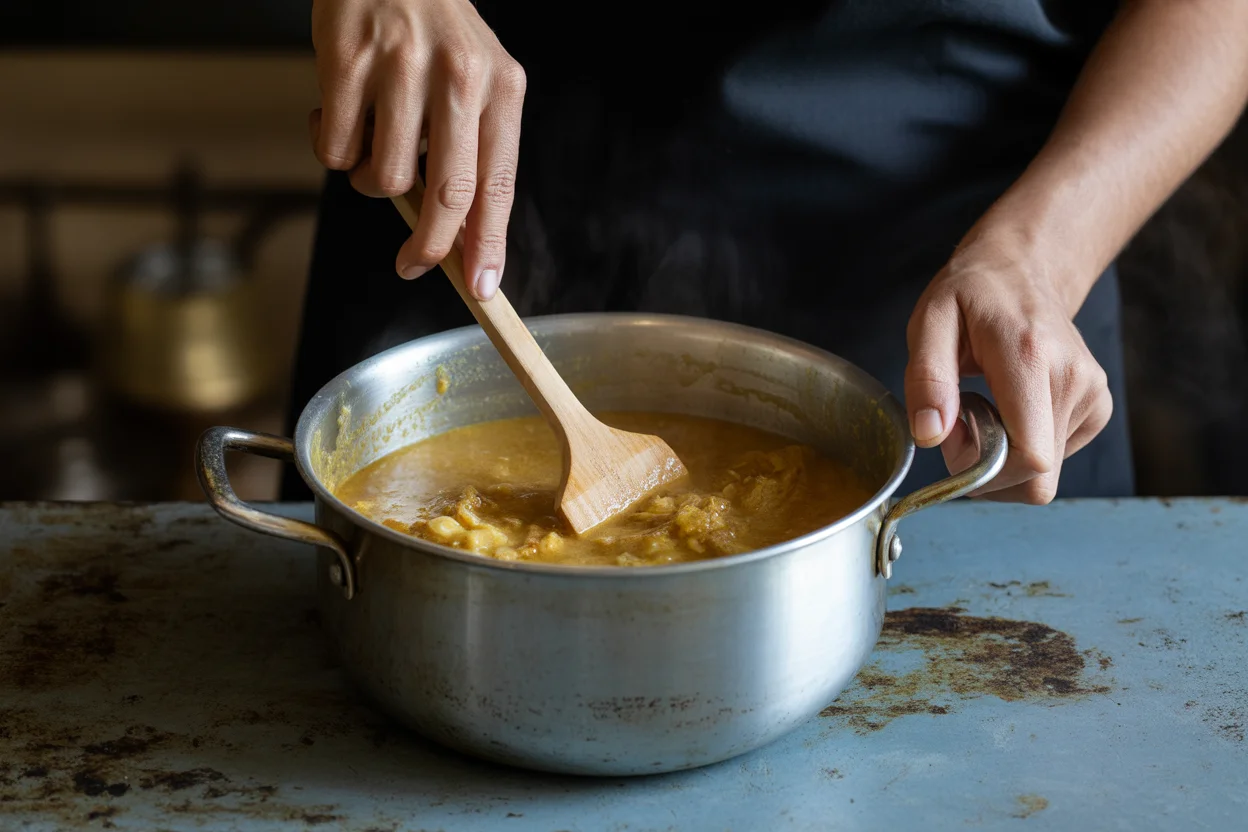
Preparing mung beans
Let’s clear this up: soaking isn’t always needed. Sure, some say to soak mung beans overnight for “tenderness,” but I straight-up skip that 90% of the time (hey, life happens). Rinse them well under cold water, rub them a bit between your hands to get some starch off. Use about a cup and a half for a family-sized pot.
Pop them in a pot, cover with triple the water, and boil. Watch them—seriously, they can bubble over if you walk away for even five minutes (happens every time!). Lower the heat, let them simmer about 30 minutes or until the skins burst and beans are soft like mashed peas. You want them soft, but not total sludge (unless that’s your jam—no judgment here).
Some folks add a bay leaf to the boiling water. I skip it, but do what sings to you. Once the beans are soft, drain ’em if you want a thicker stew, or keep that bean broth in for extra nutrition.
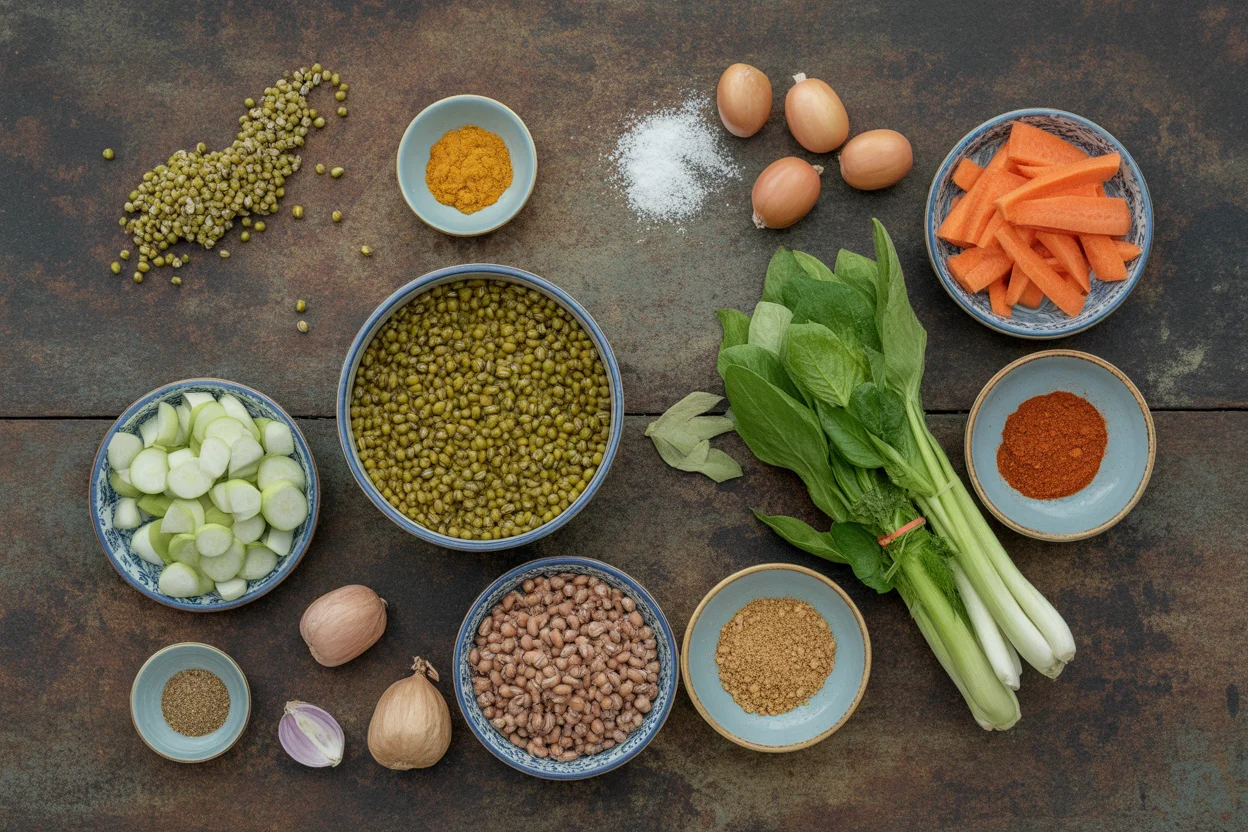
Sautéing aromatics
Here’s where the magic happens, honestly. Take a big pan with a bit of oil. Toss in chopped onions and lots of garlic (I’m talking six cloves minimum, don’t be shy). The kitchen starts smelling absolutely wild—like you mean serious dinner business.
Next, a tomato or two goes in, diced up. Let everything dance around in the heat until it’s soft and the tomato’s let out its juices. I like to add a little fish sauce at this point (smells funky, tastes amazing later). If you want your ginisang monggo entirely vegan, just stick with soy sauce or salt.
If you’ve got meat (leftover rotisserie chicken, a chunk of pork, or even fried fish), this is your golden moment to throw it in and stir it for extra flavor. Otherwise, go straight to the next step with your softened mung beans. Don’t stress too much over fancy knife skills. Rustic is real, right?
Cooking beans with vegetables
Now dump those tender mung beans into the pan with your aromatics, plus a couple cups of the boiling water or broth for extra coziness. Bring to a gentle simmer while you look through your fridge for vegetables. I usually scrounge up spinach, malunggay (if you’re lucky enough to have some), or sometimes bitter melon for that grown-up taste.
As the stew thickens (about 10-15 minutes on low heat), add your greens last thing. They wilt fast and you don’t want them sad and mushy. Some people even sprinkle in chicharon (crispy pork skin) for crunch. Wildly good if you ask me.
Just let everything hang out in the pot together a bit, so the flavors settle in. Stir occasionally, so nobody sticks and burns the bottom—ask me how I know.
Seasoning
Taste test the broth. Always. Sometimes it needs a bit more fish sauce, sometimes a grind of black pepper, or even a dash of soy sauce if you’re skipping animal products. Filipinos usually go for that “tamang-tama” homemade flavor—just enough salt to make you want one more spoonful of rice.
A squeeze of calamansi (Filipino lime) brightens it up if you have it. If not, tiny dash of lemon still works. There’s no one-and-done answer here. I like mine a little garlicky, a little savory-salty, but you can spice yours up with crushed chili if you want. Make it yours.
Serving with rice
Truth—ginisang monggo isn’t complete without a fluffy mountain of rice. White rice is classic, but brown is totally fine if you’re on that vibe. Spoon your stew over the rice so the broth soaks in. Sometimes, I pile up tiny fried fish on the side, but ginisang monggo is hearty enough all on its own.
Some good ways to level up your plate:
- Add a side of fresh tomatoes or chili if you need brightness
- Top with crispy garlic or leftover chicharon for crunch
- Pair with savory Filipino breakfast silog for double comfort
Get creative. It’s a five-star restaurant… in your pajamas.
Nutrition notes
Here’s what’s wild about ginisang monggo—this stew packs a surprisingly nutritious punch. Mung beans are loaded with plant protein, fiber, and a bunch of minerals you can’t pronounce (hello, magnesium). If you’re tossing greens like spinach or moringa, that’s even more vitamins in your bowl.
It’s naturally low-fat if you’re skipping added pork or chicharon. Even my health-conscious tita approves this dish, especially if you cook it with coconut or olive oil instead of lard. This meal works for just about any diet—except maybe no-carbers, since the rice and beans combo is filling as heck.
Basically, you get warmth, fullness, and nutrients all in one. For more ideas on cooking healthy Filipino food (with gusto), check out these healthy Filipino recipes or try my other favorite on chilly nights, this tinola with spinach.
Common Questions
Can I use canned mung beans for ginisang monggo?
Eh, technically? But dried mung beans taste fresher and get creamier. Canned ones can be mushy, so add them right at the end if you must.
Is ginisang monggo vegan?
Super easy to keep it vegan—just skip fish sauce, pork, or chicharon. Season well, use lots of veggies, and it’s just as hearty.
Do I have to soak mung beans overnight?
Nope! As long as you rinse and simmer them, they’ll cook in about half an hour. Soaking just speeds things up a little.
Can I freeze leftovers?
Absolutely. Ginisang monggo freezes like a dream. Portion it out and save some for later busy weeks.
What’s the best veggie to use?
Spinach and malunggay are classics, but bitter melon or even squash goes great, too. Honestly, whatever leafy stuff you have on hand is worth a try.
Ready to Ladle Up Some Comfort?
That’s everything about making ginisang monggo at home, from boiling mung beans to seasoning and serving with a big scoop of rice. It’s the kind of meal you’ll find in every Filipino household, absolutely packed with flavor but easy enough to whip up on a regular weeknight. If you want to try a slight twist, check out this tasty Pork Monggo Recipe – Panlasang Pinoy. Or maybe you like step-by-step visuals—go for the tips at The Easiest Monggo Recipe Ever. For those looking for vegan comfort bites, the Ginisang Munggo (Filipino Mung Bean Soup) – Eat Figs, Not Pigs version hits the spot. Don’t be afraid to put your own spin on it, and if you make a wildly good bowl, shoot me a message. Happy monggo weeknight cooking!
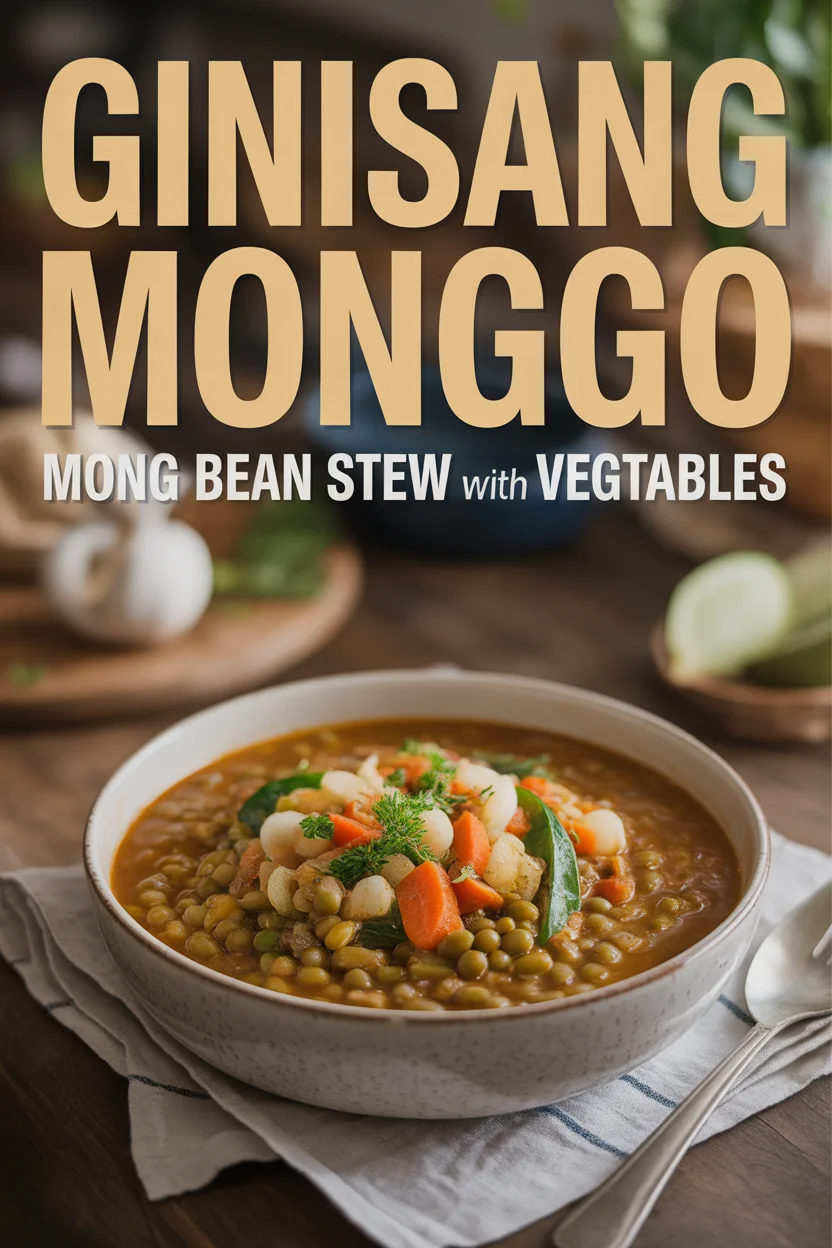
Ginisang Monggo
Ingredients
Mung Beans
- 1.5 cups Mung beans Rinsed and boiled
Aromatics
- 1 medium Onion, chopped Base flavor
- 6 cloves Garlic, minced For strong flavor
- 2 medium Tomatoes, diced To add juiciness
- 2 tablespoons Fish sauce Optional for seasoning
Vegetables
- 2 cups Vegetables (e.g., spinach, malunggay, or bitter melon) Fresh greens added at the end
Seasoning
- 1 teaspoon Black pepper To taste
- 1 small Calamansi or lemon For brightness, optional
Serving
- 4 cups Rice White or brown rice
Instructions
Preparing Mung Beans
- Rinse mung beans well under cold water and rub between your hands to remove starch.
- Place them in a pot, cover with triple the water, and bring to a boil.
- Lower the heat and let them simmer for about 30 minutes until soft.
- Drain if a thicker stew is preferred.
Sautéing Aromatics
- In a large pan, heat oil and add chopped onions and minced garlic; cook until fragrant.
- Add diced tomatoes and cook until soft.
- If using meat, add it now and stir to combine.
Cooking Beans with Vegetables
- Add boils mung beans to the pan with the aromatic mixture.
- Pour in a couple of cups of broth and let simmer.
- Add vegetables towards the end of cooking and let them wilt.
Seasoning
- Taste the broth and adjust seasoning with fish sauce, pepper, and calamansi or lemon.
Serving
- Serve over a bowl of rice and enjoy with additional toppings if desired.
